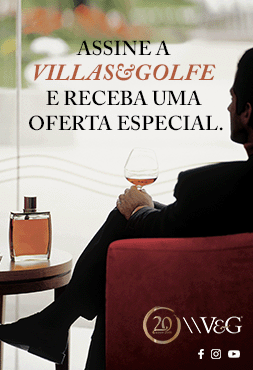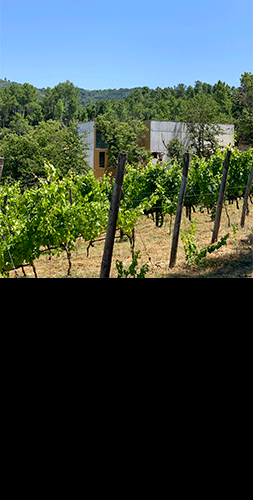In the heart of the historic centre, there are two adjoining
buildings, the ‘Solar dos Cavaleiros’, a mansion dating back to the 18th
century, and a contemporary building from the 21st century. Together
they form the Cargaleiro Museum, a
municipal cultural facility whose mission it is to study, catalogue, preserve,
interpret, display and promote the Manuel Cargaleiro Foundation Collection. In
addition to the various exhibition rooms, there are other areas associated with
the museum’s dynamics, such as the library and the Educational Service, as well
as the shop and a small outdoor amphitheatre.
It is believed that the 18th century was the most productive
period for Castelo Branco Embroidery,
a region where growing flax was traditional and where the mulberry tree allowed
the large-scale rearing of silkworms. After a phase of decline, its resurgence
occurred in the first quarter of the 20th century. While the basis
for Castelo Branco Embroidery were engagement quilts, displaying biblical themes,
flowers, friendship, love and the bond of marriage, nowadays, although the
technique remains the same, there may be other motifs, such as a work by the
artist Cristina Rodrigues, who has designed large panels, embroidered in the
Interpretation Centre, which then decorated the altars of Manchester Cathedral
in the United Kingdom. Traditional motifs have also inspired other arts, such
as Portuguese cobblestone, postage stamps, fashion, furniture, etc. Castelo
Branco Embroidery, in natural silk on handmade linen, has its epicentre in the Interpretation
Centre, which aims to contribute towards the recovery, innovation, re-launch
and enhancing the status of Castelo Branco Embroidery, the highlight of the
city and the municipality, a unique form of artistic expression.
Housed in a modern building, the Castelo Branco
Contemporary Culture Centre (CCCCB), in Campo
Mártires da Pátria, aims to promote and disseminate contemporary culture,
stimulate artistic creation and work to engender and teach new audiences. In
addition to the exhibition areas, it has an educational services area, a
cafeteria, an ice skating rink and an auditorium with 275 seats, which is
equipped with an exceptional sound system. For those who prefer not to be
accompanied during their visit, the CCCCB offers multilingual exhibition room
sheets and tables with QR Codes.
The Episcopal Palace Garden
is located next to the former Episcopal Palace, home to the Francisco Tavares
Proença Júnior Museum. This is one of the most significant Portuguese Baroque
gardens, where a perfect harmony between vegetation, water and statues prevails.
It features several arrangements and boasts the charm of the terraces with box
hedging, lakes and sculptures stood in hidden corners, or ascending different
levels of staircases in a blaze of glory, be they symbolic figures, statues of
kings or apostles, among others. The Lake of Crowns, the Waterfall of Moses and
the flooded Garden are some of the features not to be missed.
Beira Baixa is the region in which some of the best loved and most
traditional cheeses in the country are produced, thanks to the excellent
pasture land, where sheep and goats find favourable conditions to produce rich,
delicious milk. The main ingredient combines artisan production techniques that
give the Cheeses from the Region of Castelo Branco PDO unique organoleptic
characteristics. Casa Agrícola Cabeço
Carvão, in Alcains, can already look back over 80 years of history, and now
the third generation is charged with continuing the persistence, hard work and expertise
of Grandmother Teresa. The dairy is home to a range of dairy products, such as
sheep’s cheese (amanteigado), mature sheep’s
cheese (‘CORNO’ cheese), ‘Cabreira’ Sheep’s cheese, Queijo da Avó, Sheep’s Cottage Cheese (TRAVIA), etc.
Castelo Branco is a veritable open-air museum, where heritage
survives unscathed, living in harmony with tourism and modernity. Birthplace to
some of the oldest and richest traditions, the municipality is known
internationally for its embroidery, cheese, olive oil and wine. Its landscapes
are stunning, just as its flavours. But it is its people, proud of centuries of
heritage and boldly striving in search of modernity, who turn Castelo Branco
into a vivid municipality «embroidered with light».
Castelo Branco
«Embroidered with light»
On one side the International Tagus Nature Park and on the other the
Serra da Gardunha mountains. Here we find the capital of the Beira Baixa lies,
the land the Romans named Albi Castrum. The city has grown over the centuries,
from the fortifications built high on a hill to the plains beyond. Today
Castelo Branco is a municipality with an old soul, because it has been able to
preserve heritage and traditions, and with a new soul, present in the energy of
its welcoming and enterprising people, aware that the present will lead to an
even more fruitful future.


















